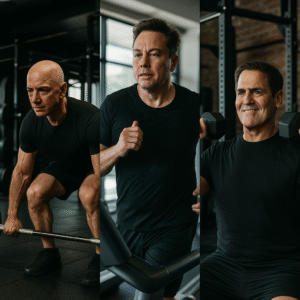Taking up fitness is more than just working out; it’s a process of transformation that progresses from learning the fundamentals to becoming an expert. Familiarity with the principles of fitness training is essential, regardless of your level of experience or desire to adopt a healthy lifestyle. We explore the fundamental ideas that lead from beginner to expert in the field of fitness in this thought-provoking investigation. This blog will be your guide as you learn the ins and outs of the art and science of fitness training, from deciphering basic workouts to understanding the subtleties of successful coaching. Achieve a thorough comprehension of the fundamentals by uncovering the mysteries that beyond physical capabilities. It’s time to set the stage for a path that offers sustained dedication to well-being and not simply physical transformation.
Understanding Human Anatomy and Physiology
A solid understanding of human anatomy and physiology is the foundation for providing successful fitness instruction. New trainers need to learn the nuances of the human body’s mechanics before they can start helping others with their fitness journeys. It is critical to comprehend muscle function, movement kinematics, and the physiological reactions to training. With this fundamental understanding, trainers may create exercises that maximize the body’s inherent potential while maintaining safety and effectiveness. Trainers can learn about joint mechanics, muscle engagement, and possible weak points by understanding the complexities of anatomy. This information enables the development of personalized training regimens that meet the needs of each individual, guaranteeing that workouts are not only efficient but also specially designed to meet particular objectives.
Tailoring Workouts for Beginners
 Building a Solid Foundation
Building a Solid Foundation
The foundation of any successful fitness journey lies in establishing a strong base. For beginners, this involves focusing on fundamental movements and exercises that target major muscle groups. Emphasizing proper form and technique during these foundational exercises not only prevents injuries but also sets the stage for more complex movements as clients progress.
Incorporating Gradual Progression
Novice clients are just starting their fitness journey, and overwhelming them with intense workouts can be counterproductive. Gradual progression is key to ensuring that beginners build strength, endurance, and confidence over time. This section will explore how to design progressive workout plans that challenge clients appropriately, considering their current capabilities while gradually increasing the intensity as they become more adept.
Ensuring Safety
Safety is paramount, especially for those new to fitness. This part of the content will delve into creating a safe workout environment, including proper warm-up and cool-down routines, appropriate exercise modifications, and guidelines for using equipment. Educating beginners about the importance of listening to their bodies and recognizing when to rest or modify exercises is essential for injury prevention.
Effective Communication
Communication is the cornerstone of successful fitness instruction. This section will highlight the importance of clear and encouraging communication when working with beginners. Explaining exercises, providing feedback on form, and addressing any concerns or questions contribute to a positive training experience. Effective communication builds trust and establishes a supportive trainer-client relationship.
Motivation Techniques
Keeping beginners motivated is a continuous challenge. This part of the content will explore various motivational strategies, such as setting achievable goals, celebrating small victories, and creating a positive training atmosphere. Motivated clients are more likely to stay committed to their fitness journey, and trainers play a crucial role in inspiring and encouraging them along the way.
Progression Strategies for Intermediate Clients
As clients transition from beginners to intermediates, trainers must adapt instruction for continued growth. This section explores vital strategies:
 Embracing Variety:
Embracing Variety: Introduce diverse exercises and modalities to keep workouts engaging and target different muscle groups.
- Increasing Intensity:
Gradually raise workout intensity through resistance, duration, or advanced techniques to avoid plateauing.
- Fine-Tuning Techniques:
Refine form and movement patterns to enhance effectiveness and reduce injury risk.
- Balancing Challenges with Achievable Goals:
Set realistic, measurable objectives to motivate clients without overwhelming them.
- Monitoring and Adjusting Plans:
Regularly assess progress, adapting plans based on achievements and challenges to ensure steady advancement.
- Providing Mental and Emotional Support:
Address clients’ psychological needs, offering encouragement and fostering a positive mindset.
- Incorporating Advanced Training Techniques:
Introduce methods like HIIT or supersets to challenge clients and stimulate continuous adaptation.
By applying these strategies, trainers guide intermediate clients towards sustained progress, fostering enthusiasm for a healthy lifestyle.
Advanced Techniques for Seasoned Enthusiasts
Periodization: Crafting Long-Term Success
Periodization is a strategic approach to training that involves breaking down the overall training program into distinct phases, each with specific goals and intensities. This section will explore the benefits of periodization, such as preventing burnout, optimizing performance, and promoting continuous improvement. We’ll discuss various periodization models and how to tailor them to individual client needs, ensuring sustained progress and minimizing the risk of overtraining.
Specialized Training Modalities: Targeting Specific Goals
For seasoned enthusiasts with specific fitness goals, specialized training modalities are indispensable. We’ll delve into the world of techniques like high-intensity interval training (HIIT), circuit training, and functional training. Understanding when and how to incorporate these modalities into a client’s program will add variety, challenge, and effectiveness to their workouts. This section will also emphasize the importance of assessing client goals and adapting training approaches accordingly.
Addressing Plateaus: Breaking Through Limitations
Plateaus are common in fitness journeys, and overcoming them requires strategic planning. In this part, we’ll explore advanced methods to address and break through training plateaus. This includes manipulating variables such as intensity, volume, and frequency, as well as introducing advanced training techniques. Whether it’s incorporating advanced resistance training methods or exploring alternative forms of exercise, we’ll provide insights into how to keep clients progressing toward their goals.
Staying Updated: The Role of Continuous Learning
In the ever-evolving fitness industry, staying updated with the latest trends and research is crucial for a pro-level fitness instructor. This section will discuss the importance of continuous education, including attending workshops, pursuing advanced certifications, and keeping abreast of scientific literature. We’ll explore how staying informed allows instructors to integrate new, evidence-based practices into their training programs, ensuring they provide cutting-edge guidance to clients.
Navigating the Sea of Information: Critical Evaluation
With a flood of information available in the fitness industry, it’s essential to develop skills for critical evaluation. This part of the blog will guide instructors on discerning reliable sources, separating myths from facts, and making informed decisions when integrating new techniques. By honing critical thinking skills, fitness professionals can confidently incorporate advancements that align with their clients’ needs and goals.
Mastering Motivation in Fitness Instruction
Motivation is the driving force behind successful fitness instruction. This section explores effective strategies for trainers, emphasizing goal setting, positive reinforcement, and creating a supportive training environment. Adapting these techniques to different client personalities enhances overall effectiveness.
- Understanding the Importance of Motivation:
Recognizing the significance of sustained motivation is crucial for creating lasting changes in clients’ fitness journeys.
- Goal Setting:
The Foundation of Motivation: Helping clients set clear, achievable, and SMART goals lays the groundwork for effective motivation.
- Positive Reinforcement:
The Power of Encouragement: Acknowledging and rewarding positive behaviors creates a feedback loop, fostering a sense of accomplishment.
- Creating a Supportive Training Environment:
A positive and supportive atmosphere, both physically and emotionally, contributes to nurturing motivation.
Adapting Motivational Techniques to Different Client Personalities:
Tailoring strategies to match individual personalities ensures resonant and impactful motivation.
- Overcoming Challenges and Setbacks:
Addressing obstacles and setbacks is essential in maintaining and restoring motivation.
In fitness training, the art of motivation is a dynamic and subtle talent that calls for commitment, flexibility, and sincere concern for clients. Trainers can perfect the art of motivation by practicing empathy, introducing diversity and advancement, recognizing varied client personalities, setting clear goals, using positive reinforcement, and continuous education. By doing this, they provide their clients the tools they need to overcome obstacles, meet their fitness objectives, and maintain a lifelong dedication to health and wellness.
Building Strong Client-Trainer Relationships
Building a strong client-trainer relationship is essential for sustained success in fitness instruction. Effective communication, active listening, and fostering trust are key components. Trainers should actively listen to clients, understand their needs, and engage in open dialogue to tailor workouts accordingly. Trust is established through reliability, transparency, and delivering promised results. This robust bond not only enhances the training experience but also contributes to client retention and generates referrals, ultimately ensuring ongoing success for the fitness instructor. In summary, investing in a solid client-trainer relationship is an investment in long-term professional growth and a flourishing fitness instruction career.
Conclusion
Mastering the fundamentals of fitness instruction is paramount for individuals embarking on their wellness journey, and Results Transformation Center (West Sacramento) stands as a beacon of guidance and support throughout this transformative process. At our center, we take pride in being the driving force behind novices evolving into seasoned fitness enthusiasts. With (775) 360-5776 as your connection to our expert services, we ensure a comprehensive approach that caters to every individual’s unique needs. Through unwavering commitment and personalized guidance, we foster a community where everyone can achieve their fitness goals, embodying the philosophy that success begins with mastering the basics.








